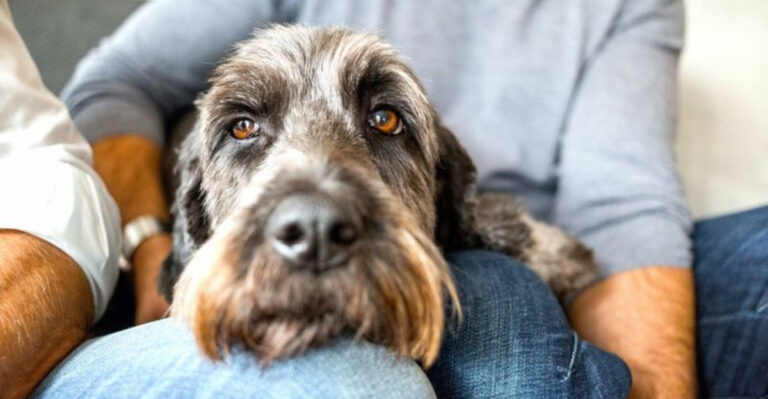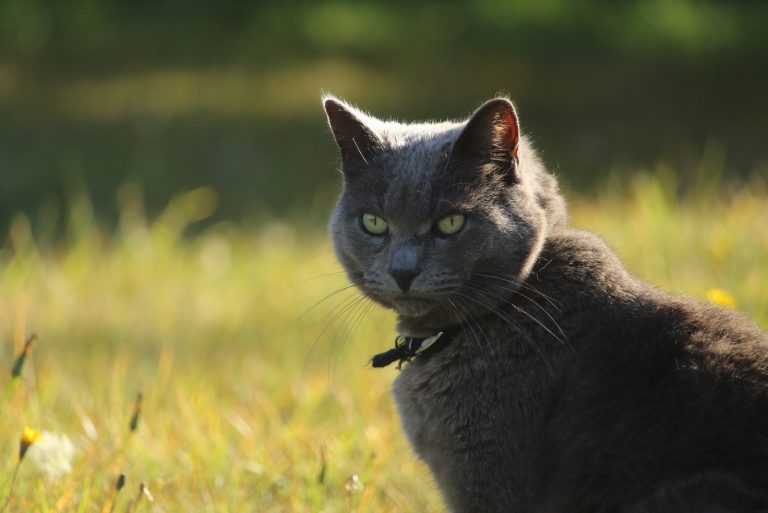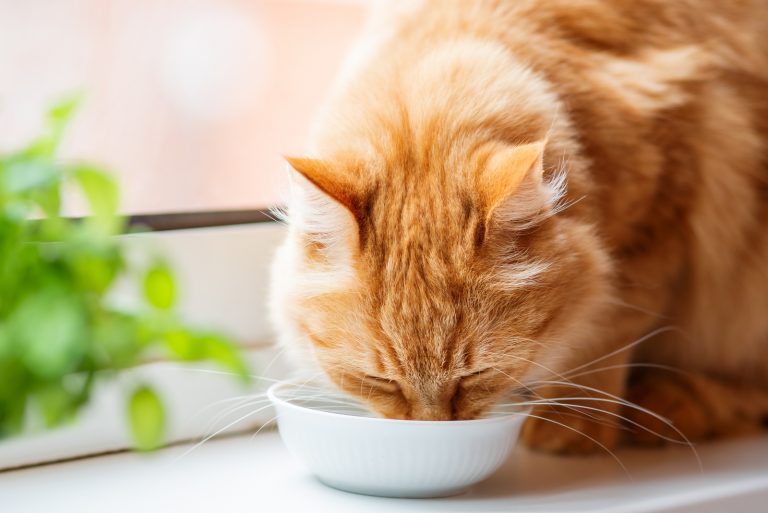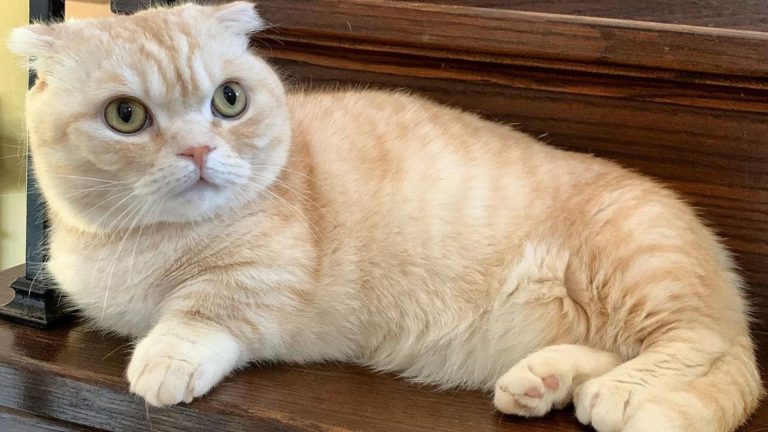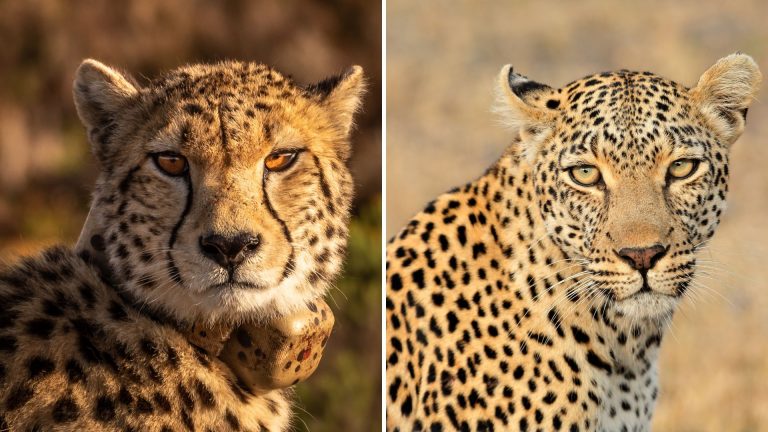The Meaning Behind Cats Pupils: Understand Your Kitty Better
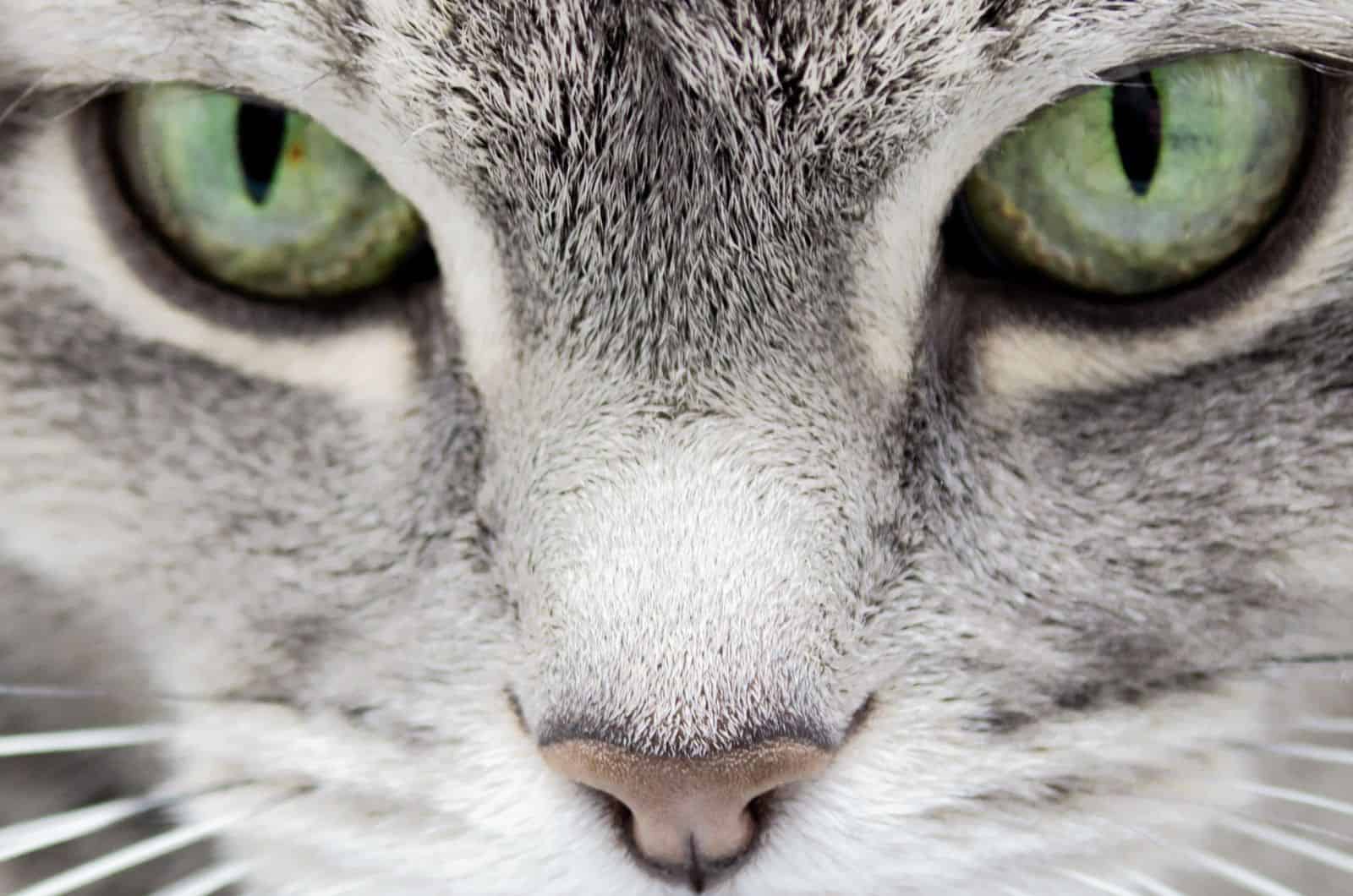
Every cat owner wants to understand their feline friend better, with the goal of providing them with everything they could possibly need to be healthy, happy, and safe.
Most of us rely on our kitty’s body language and the sounds they make (meows, howls, hisses) in order to understand what they’re thinking.
However, there is one more thing that we can observe to give us insight into how our cats are feeling – the cats pupils.
Many of us don’t pay a lot of attention to our cat’s eyes, or examine the cat’s pupils, but a cat’s pupil shape and size can tell us a lot about what they’re thinking or feeling.
Sometimes, a cat’s pupils can indicate the state of its health, and this is what we are going to explore.
So, cat owners and cat lovers, if you want to learn what a cat’s pupils can reveal about them and how they’re an important indicator of some potential health problems, I highly recommend you continue reading!
The Function Of Your Cats Pupils
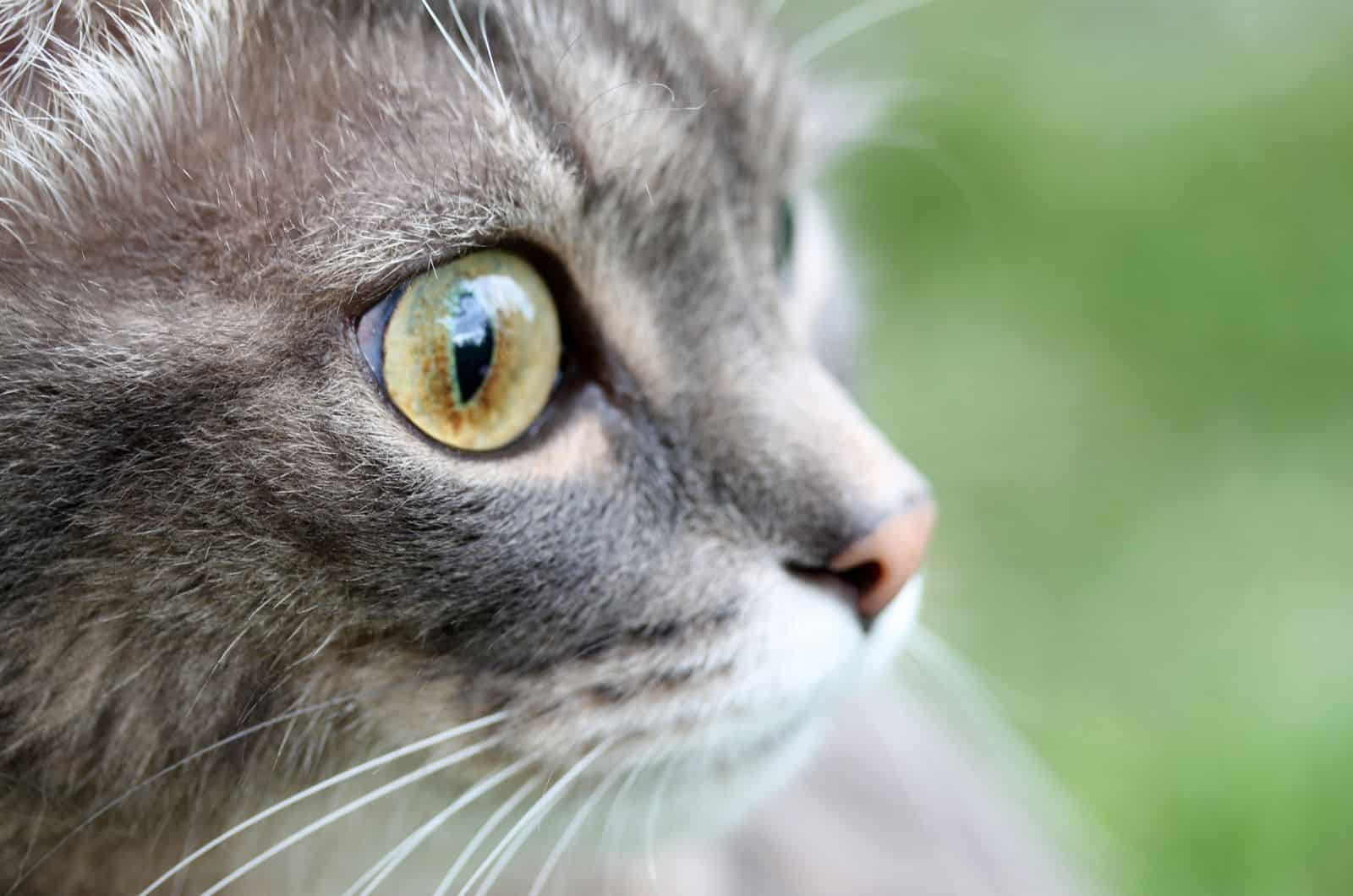
Before we get into the various meanings behind the shape of your cat’s pupils, let me briefly go over their function.
The pupil is the black structure in the center of the iris of the eye. The pupil allows light to reach the retina of the eye.
When the light hits the pupil, it changes size. Regulating the pupil’s size means regulating the amount of light entering the eye.
In the dark (or in low-light conditions), the pupil enlarges. In the bright light, it contracts. This is controlled by the nervous system. Human eyes also adjust to light levels in this way.
As well as adapting to light, a cats’ pupils also change according to the cat’s mood! The diameter of the pupil can also indicate an underlying condition (such as anisocoria).
Although the function of the pupil is the same for every species, the shape is not.
For example, cats have vertical slit pupils, goats have horizontally oriented pupils, and in humans, the pupil is round.
Now, let’s get into what the change in pupil size means!
What Could Your Cat’s Pupils Be Telling You?
A cat’s eyes have some amazing features. They are incredibly efficient, stunningly beautiful, and they glow in the dark! They are also closely connected with a cat’s behavior.
Soon, you will also be able to recognize what your cat is feeling by looking at changes of their pupil size and understanding how it reflects their mood.
A cat’s pupils can be:
• Dilated
• Narrowed
• Almond-shaped
Now, let’s get to the bottom of what each of these pupil shapes mean!
The Meaning Behind Your Cat’s Dilated Pupils
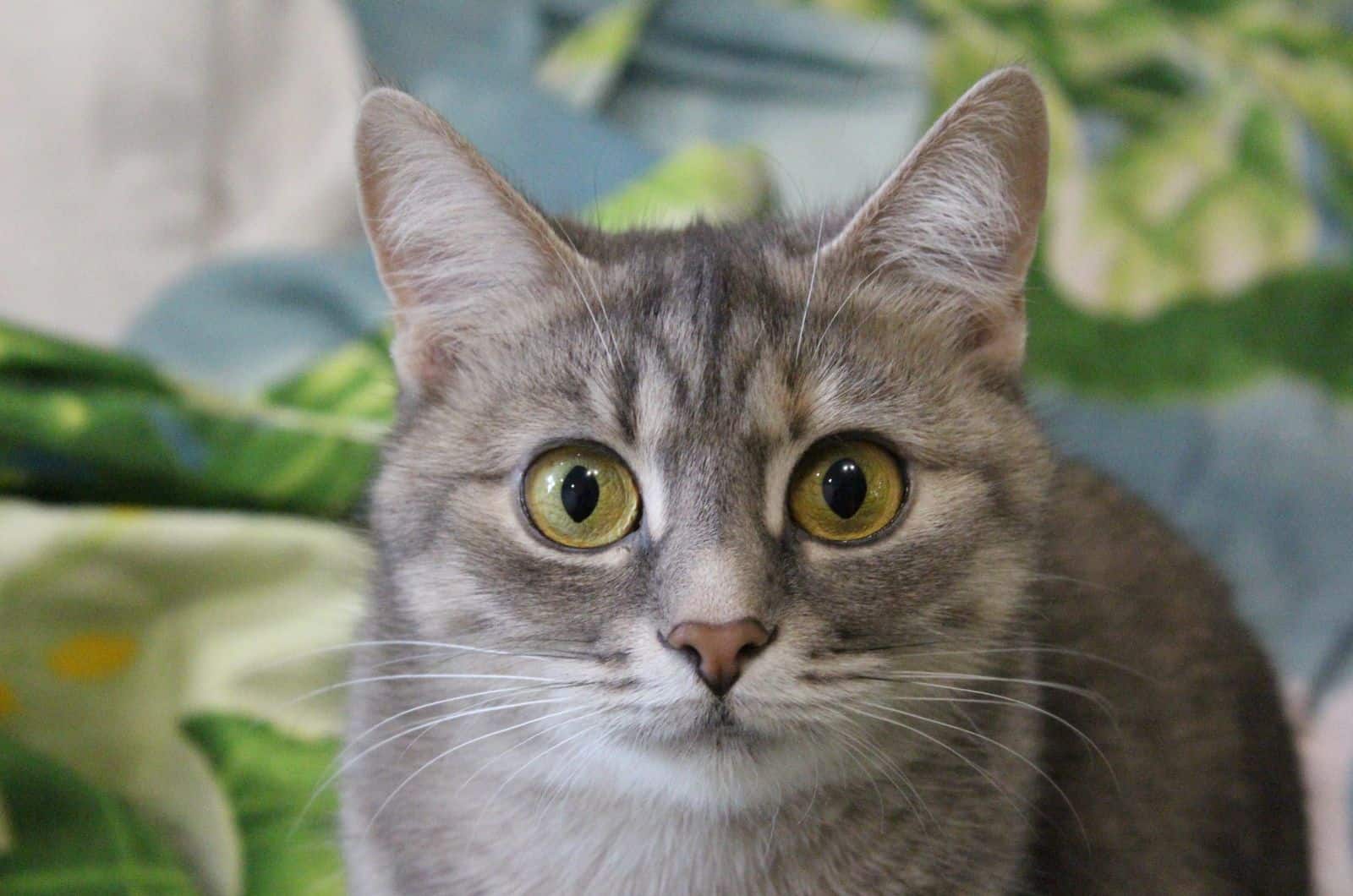
You have probably already seen your cat’s pupils dilated a million times. There are multiple reasons why your cat may have dilated, round pupils, as explained below!
1. Your Cat Is Excited
Imagine you’re opening a bag of your cat’s favorite snacks and they hear the familiar noise. In a second or two, your cat is right there at your feet and looking up (they know what’s coming!).
How do your cat’s eyes look? They are wide open and their pupils are dilated, right?!
Or if you’ve just taken your cat’s favorite toy and they see or hear it, they will jump right from their bed and onto their feet so they can play. Their eyes will also be wide open, and pupils dilated.
A cat’s dilated pupils often mean your cat is excited, and ready in anticipation to do something that makes them very happy!
2. Your Cat Is On Alert
Whether your cat is terrified of a loud noise, a stranger entering the house, or a large dog outdoors, their pupils will likely remain dilated until they make a decision about the potential threat.
You will probably have witnessed this many times, especially if you startle a stray cat, for example.
A worried cat has to make a decision on how to react to a potential threat, similar to how their pupils dilate when they are surprised. The more visual information they have, the quicker they can react.
So, if your cat’s pupils suddenly dilate for no apparent reason, you should speak softly to them and try to soothe them as best you can.
If your cat is not settling down, try to find out what’s causing them to be on edge. You can do this by double checking your cat’s surroundings to see if there really is a threat out there or not.
3. Your Cat Being Aggressive
Pupil dilation can also signal that your cat has detected a threat and is becoming aggressive.
This is frequently accompanied by squinting eyes. In a potentially hostile circumstance, they squint their eyes to better defend them.
Before you conclude that your cat is feeling aggressive, it’s essential to consider all the signs your cat is displaying.
If your cat’s pupils enlarge and your cat is also hissing, growling, or has their ears flattened against their head, this indicates that your cat is very hostile.
The threat could be a neighbor’s cat entering your cat’s territory, or another pet from the house using their litter box.
When they feel threatened by another animal or a human, cats are known to resort to scratching and biting. As any cat owner knows, this is not the time to try to pick up or handle your cat.
It’s best to try to eradicate whatever is creating the violent reaction quickly and quietly. As a result, if you suspect your cat is in defense mode, allow it some time to calm down.
4. Your Cat Might Be Experiencing Health Problems
A cats’ pupils can enlarge for a number of reasons, but they usually return to normal within a short time. If your cat’s pupils are persistently dilated, though, it may indicate a serious medical issue.
What potential medical issues are we talking about? Well, the list is a long one:
• Hypertension
• Chronic pain
• Vision loss
• Head injury
• Nerve injury
• Anisocoria
• Ocular tumor
• Feline glaucoma
• Hypoglycemia
• Poisoning
• Medication side effects
One of the main reasons for dilated or round pupils in older and overweight cats is feline hypertension. By examining your pet’s eyes, veterinarians can sometimes detect hypertension.
The pupils might not constrict in the presence of intense light, which could indicate high blood pressure. If untreated, this can lead to blindness.
Some drugs can also cause widened pupils as a side effect. As a result, the pupils may continue to be dilated throughout the course of treatment.
There is no reason to be concerned as long as the medication is working, but confirm that it is a side effect with your vet in case some other issue is at play.
A cat whose vision is failing will usually have dilated pupils. To help them see better, their pupils enlarge in an effort to let in as much light as possible.
In addition to having large eyes, if your cat is clumsy around the house or frequently bumps into things, they may be losing their vision.
Take your cat to the vet right away if you think they may have sight problems.
Suggested: Disoriented Cat With Dilated Pupils: Should You Be Worried?
5. Dilated Pupils Help Your Cat’s Night Vision
Human pupils enlarge in low light to improve vision. Cats’ pupils enlarge similarly to ours, but they can do it a lot more than we can.
A cat’s eyes contain a large number of photoreceptor cells, known as rods. These are responsible for allowing animals to see at night. Even kittens can see in the dark!
Cats have many more of these cells than we humans, so they have much better night vision than we do.
Enlarging the pupil allows more light to enter, and the many rod photoreceptors on cats’ eyes are then able to process the limited light efficiently so that cats can see better in low light.
Cats must be vigilant and brave when pursuing prey, especially at night. Their pupils widen as a result of the adrenaline rush of the hunt.
They are able to gather information about their environment because of their wide pupils and huge eye lenses.
This is an evolutionary development that makes them natural hunters. These traits come into play in low light and at night, enlarging their eyes to improve their vision.
Recommended Read: Do Cats Have Eyelashes? Everything You Need To Know
The Meaning Of Your Cat’s Narrowed Pupils
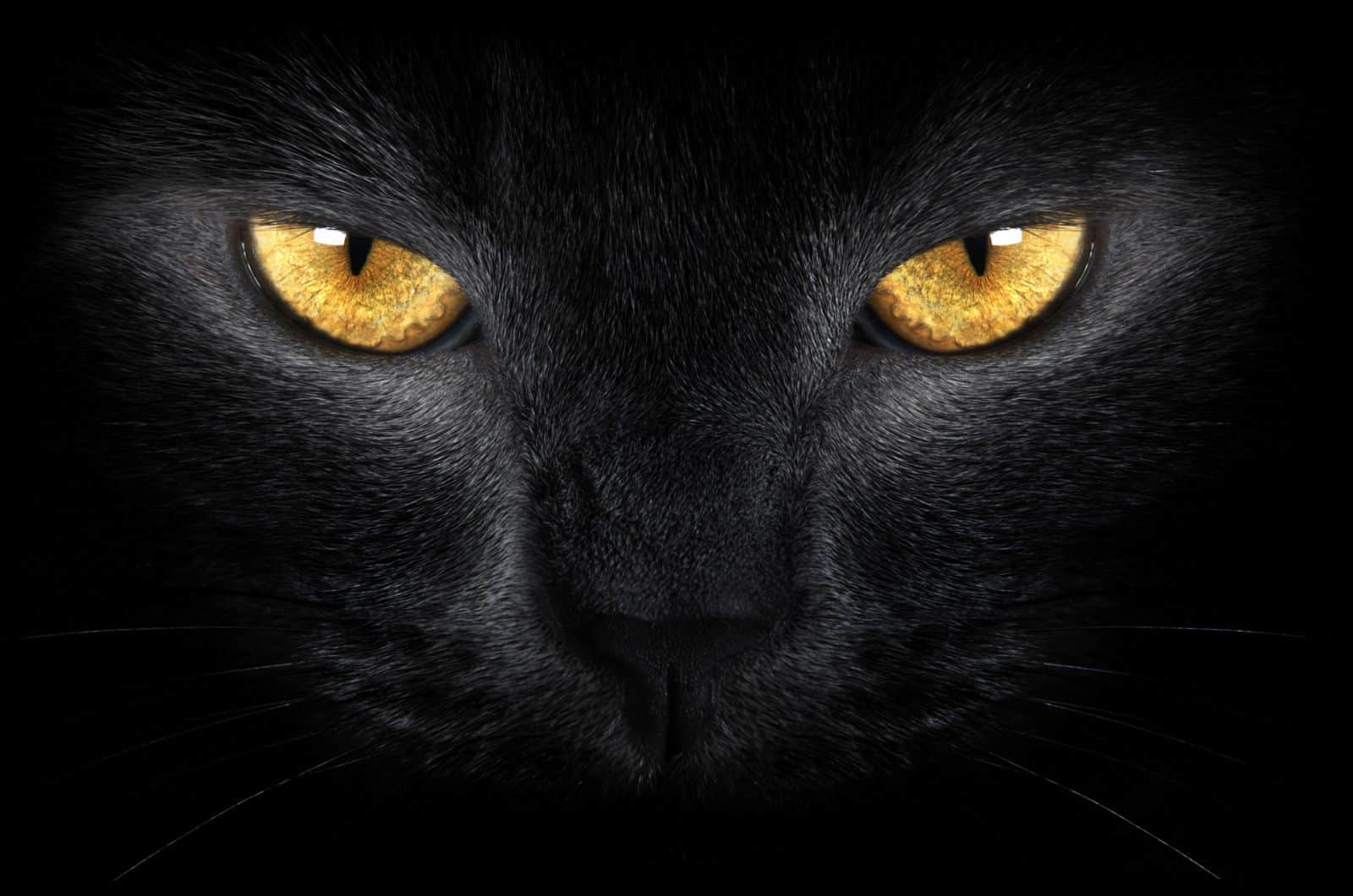
If you were ever wondering what it means when a cat’s pupils are thin, here is your answer (two answers actually!).
1. Your Cat Is Ready To Attack
The most likely reason why your cat’s pupils have become just a slim vertical slit is that your cat is agitated, angry, and ready to defend what’s theirs.
Your cat may be focused and in stalking/hunting mode.
Cats with slit eyes are better able to focus on a target and have more accurate depth perception, both of which are very important for hunting and pouncing.
To shield its eyes from potential opponent claws, the cat will squint. At this moment, the cat may attack you if you make eye contact with it.
However, dilated eyes also indicate aggression, so don’t mistake your cat’s dilated eyes when you take away their cat food as something else!
2. It Might Simply Be Too Bright Outside
A cat’s pupil size is not just correlated with their mood – it’s main function is adjusting to the brightness of the environment to optimize the cat’s vision.
The purpose of the pupils is to regulate how much light enters the eye.
Cats accomplish this by changing the size of their pupils in reaction to variations in the brightness of their surroundings.
The pupil contracts to prevent an excessive amount of light from entering, which could harm the eye.
You will have experienced this yourself when you suddenly step out of your house into your garden and it’s a nice, sunny, bright day – you immediately squint your eyes, as the brightness bothers you and actually hurts your eyes until you adjust.
Also Read: TOP 20 Domestic Cats With Yellow Eyes
The Meaning Of Your Cat’s Almond-Shaped Pupils
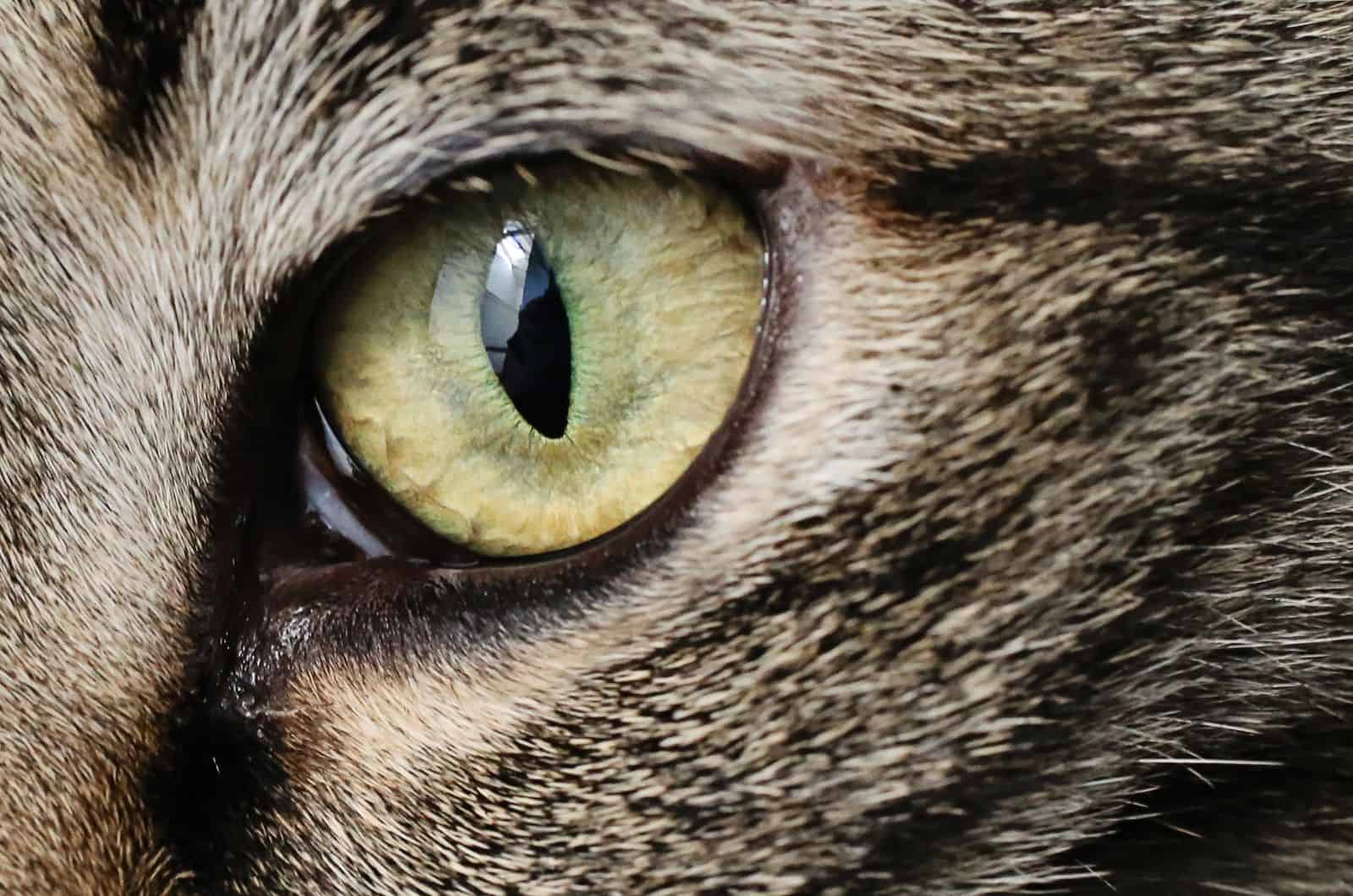
Let’s say your cat is in its normal surroundings, perfectly safe and simply lying in its cat tree. What shape and size pupils will your cat have? The answer is simple – the regular small, almond-shaped pupils.
”Almond shape” best describes the shape of a cat’s pupils when they’re simply going around their day, with nothing special happening. When the almond gets “thicker” or “thinner”, this is a sign that something out of the ordinary is happening.
Essentially, almond-shaped pupils mean everything is okay and your cat is happy – you can even call them happy cat eyes.
However, there is one thing you can keep track of here – your cat’s eyelids!
If your cat’s pupils are regular in shape, but their eyelids are partially closed – your cat is either extremely relaxed, extremely sleepy, or extremely satisfied (for example, if you’re petting them).
If you’re cuddling with your cat, they will most likely meow and purr, looking at you with half-closed “sleepy eyes”. Think of their slow blinks as their way of telling “I love you” while you’re petting their favorite spot!
Suggested Read: TOP 18 Types Of Beautiful Grey Cat With Green Eyes
The Meaning Of Your Cat’s Different-Sized Pupils
A cat’s pupils being of different sizes is not considered normal. The most probable explanation for a cat having one pupil larger than the other is having a condition known as anisocoria.
More About Anisocoria
Anisocoria is a condition marked by an imbalance in the size of the pupils of the eyes. One pupil will be noticeably larger than the other one, and the difference will be easily observable.
What Can Be The Cause Of Anisocoria?
There are many potential causative agents of anisocoria in cats, such as:
• Superficial eye injury (such as a corneal ulcer)
A corneal ulcer is a deep erosion into the cornea’s tissue (the membrane on the surface of the eyeball).
Trauma to the eye surface is the most common cause of a corneal ulcer, and it gives rise to symptoms such as watery eyes, pawing at the face, and squinting.
• Uveitis
The uvea is an eye structure which can become inflamed, and this inflammation (known as uveitis) can affect one or both eyes.
It is quite painful, and the most obvious symptoms are the cat having watery eyes and pawing at the face.
• Glaucoma
Feline glaucoma is a rare condition where the watery fluid located in the front of the eye, immediately under the lens, cannot drain normally.
Excess fluid causes pressure on the optic nerve, and symptoms include cloudiness of the eyes, as well as anisocoria.
• Cancer
Eye cancers are not common in cats (compared to dogs, for example). However, when they do occur, they are usually aggressive and difficult to treat.
They also give rise to several different symptoms affecting the cat’s vision.
• Retinal disease
The retina is part of the eye that contains the photoreceptor cells (rods and cones).
It can be affected by a number of different diseases, such as progressive retinal atrophy, retinal dysplasia, inflammation of the retina, etc..
• Horner’s syndrome
Horner’s Syndrome is typically caused by problems with the sympathetic nervous system issues.
It affects how the muscles in the face move and how the eyes look. One of your cat’s eyes may appear sunken and as if it has slid back into the eye socket.
• Iris atrophy
The deterioration of the iris, the colored portion of the eye that surrounds the black center, is referred to as iris atrophy. One of the symptoms is anisocoria.
• Feline leukemia virus infection
The feline leukemia virus infection brings about a range of symptoms such as loss of appetite, weight loss, fatigue, infections of a number of different organs, as well as many different eye issues including an extended third eyelid, yellowing of the whites of the eyes, and anisocoria.
How Is Anisocoria Treated And What’s The Prognosis?
Anisocoria is treated by addressing the underlying cause of the differently-sized pupils.
To decide which course of treatment is best for your pet, your veterinarian (DVM) will probably perform a number of different diagnostic procedures.
Depending on the underlying cause, the veterinarian will determine the specific course of action and treatment option.
The likelihood of a complete recovery depends on what caused the anisocoria. Your cat may need ongoing treatment to manage an underlying condition.
In the more extreme cases, if your cat has become blind, it is unlikely that their vision will return.
To decrease the risk of your cat’s vision being permanently damaged, you should seek veterinarian care right away if anisocoria occurs suddenly.
FAQ

What Is The Purpose Of A Cat’s Pupils?
The purpose of a cat’s pupils is to allow light to enter the eye. Wider pupils mean more light can come in, and narrowed pupils means less light can come in.
In low-light conditions, the pupils widen in order to get as much light as possible into the eye. On the other hand, in bright-light conditions, the pupils narrow to restrict the amount of light entering the eye.
How Does The Size Of A Cat’s Pupil Change?
In normal conditions, a cat’s pupils are almond-shaped and relatively small. When dilated, they become significantly bigger and wider and almost circular in shape.
They can also become narrowed, when the almond shape almost becomes just a vertical line.
The change in shape depends on light conditions and the cat’s mood. It is also possible that the change in shape reflects an underlying health problem, although this is less common.
Why Do Cats Have Circular Pupils?
In normal conditions, cats do not have circular pupils. In fact, their pupils are simply black vertical slits, in the shape of an almond.
When they’re very dilated, they become circular in shape. Humans have circular pupils in ordinary conditions, but cats do not.
Why Do Cats Widen Their Pupils?
Excited cats have wide-open eyes with dilated pupils. You can observe this when a cat is watching you eat! Cats also widen their pupils when they’re on high alert, in defense mode, or when they’re aggressive.
Cats also have dilated pupils when they’re hunting at night, as it allows them to gather as much light as they can.
What Does It Mean When A Cat’s Pupils Are Thin?
In very bright light, a cats’ pupils shrink in order to accommodate the excess light. The same happens to humans – if you suddenly turn the light on, you will most likely squint!
Why Do Cats Have Different-Sized Pupils?
It is not normal for a cat to have pupils that significantly differ in size. Anisocoria is a condition which has the main symptom of a cat’s pupils being of different sizes.
In Conclusion
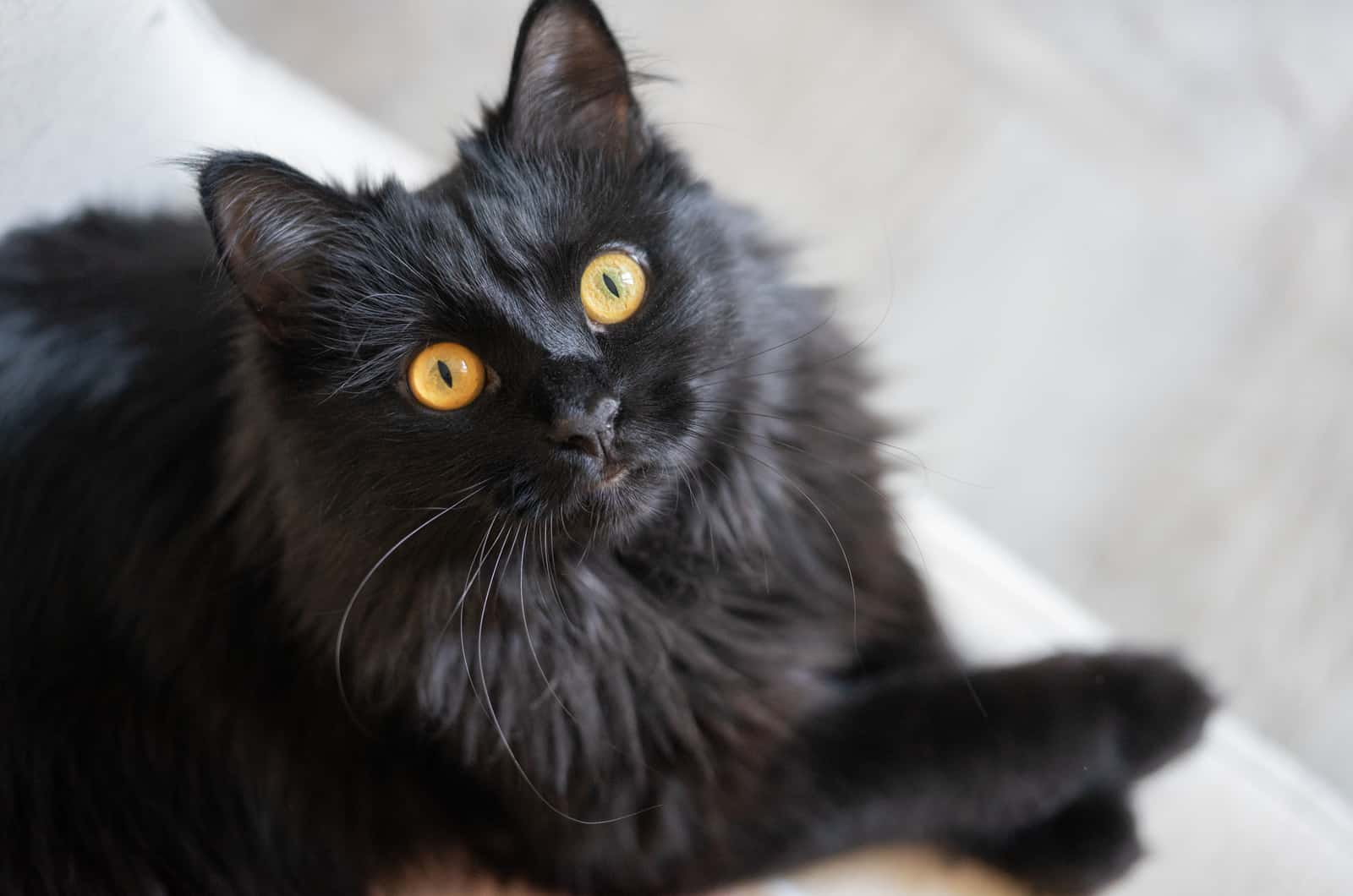
Cat eye meanings are fascinating, as they allow us to better understand our feline friends.
Apart from reading body language, and hearing the sounds our cats make, pupil shape is another characteristic that changes with a cat’s mood.
A cat’s pupils tell us a lot about what the cat is feeling.
Pupil size fluctuation can also be due to light conditions – if there is excess light, cats pupils will shrink, and in dim light, pupils will dilate.
It’s important to mention that pupil shape can be an important indicator of a cat’s health.
Permanently dilated pupils are a common sign of an underlying health issue that a cat is battling with.
There you have it – you have become a professional at reading the meaning of your cat’s pupil shape!

